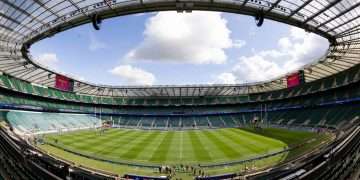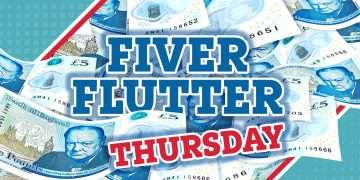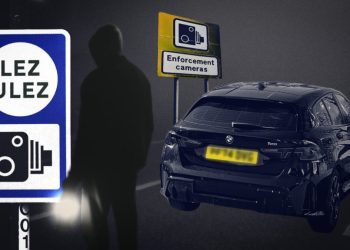
Can you name all the warning lights pictured above? A survey of 2,000 car owners by Warrantywise uncovered that 46 percent of motorists could not identify even half of the warning lights on their car's dashboard. Extrapolated to the whole UK, that adds up to 23 million drivers…
More worrying still, the Warrantywise poll revealed that three percent of drivers – a mildly terrifying 1.5 million people – could not identify any warning lights correctly at all.
Warning lights are there too alert you if your car's mechanical or electronic systems aren't working properly. As such, understanding them could potentially prevent an accident. Many can also result in an MOT test failure if illuminated.
Warning lights can be divided into three categories. Red usually means a serious problem, orange or yellow is advisory and blue or green covers everything else. Generally speaking, whether it's a single light, or your car dashboard is lit up like a shop window at Christmas time, you should address the issue quickly.
This is an overview of dashboard warning lights and what they mean. For more details, you may need to consult your car's handbook. Let's prioritize the red-light issues first – as you should when you see them.
Battery

A red warning light in the shape of a square car battery with positive and negative terminals indicates an issue with charging the battery.
This could be a problem with the battery itself, or the alternator or alternator belt. If the battery is failing to charge, you may be unable to start the car (without using jump leads or a bump-start).
Brakes

A brake warning light could be triggered by something as simple as the handbrake being left on.
If the light does not turn off when you disengage the handbrake, open the bonnet to check the brake fluid level. Or ask a mechanic to investigate further.
Low oil pressure

A light that looks like an oil can signifies low oil pressure. You should not drive with this light illuminated, as you could cause serious damage to the engine.
Turn the engine off, open the bonnet and check the oil level using the dipstick – it may need topping up. Seek assistance if the light stays on.
Seat belt

A light showing a person sitting with a seat belt across their chest warns you that someone in the car is not wearing their seat belt.
If you don't wear a seat belt and you haven't got a valid reason, you could be hit with a £100 on-the-spot fine. The driver is also responsible for any children aged 14 or younger not wearing their belts.
Coolant temperature

You should keep an eye on your car's temperature gauge to identify any issues with its cooling system, but some cars also have a temperature warning light. This looks like a thermometer with wavy lines and indicates when the engine gets too hot.
Like the oil pressure warning light, you should stop and turn off the car to let it cool down – or risk damage to the engine.
Airbag

A light showing a person with a circle in front of them suggests there is a fault with one of the car's airbags.
Investigate it as soon as convenient – a faulty airbag could compromise driver or passenger safety in the event of an accident.
Door open

This one is pretty self-explanatory. It could be one of the doors, the boot or the bonnet that is open, depending on the symbol shown.
If you see this light while driving, pull over safely and make sure the relevant opening is closed.
Washer fluid

Let's now move onto orange or yellow lights, which mean advice rather than an urgent issue.
A shortage of washer fluid can trigger a warning light on some cars. Simply top up the washer fluid reservoir to turn the light off.
Traction control

Occasionally you might see this light appear for a brief moment while driving. Most likely to illuminate in wet or slippery conditions, the traction or stability control light means the car is having to brake a wheel or cut power to prevent wheelspin or skidding.
Driving more cautiously, with the road and weather conditions in mind, should prevent it from appearing again. If the light stays illuminated, it may indicate a problem with the car's traction or stability systems.
ABS

The ABS light is most likely to come on during hard braking. This is when the anti-lock braking system is triggered. During rapid deceleration, the system will modulate the brakes to prevent the wheels from locking up and causing a skid.
As with traction control, if this activates on the road, try to adapt your driving – making it slower and smoother – to prevent the light reappearing.
Engine management

The engine management or 'check engine' light could mean a wide range of things, from an open fuel filler cap to a serious engine problem.
You will probably need to plug a diagnostics reader into your car to establish exactly what the issue is here.
Tire pressure

If your car is fitted with a TPMS (Tyre Pressure Monitoring System), you may see this light when one or more of the tires is under-inflated – possibly due to a puncture.
An under-inflated tire will wear more quickly, lead to higher fuel consumption and cause the steering to feel sluggish. It may also make the car dangerous to drive.
If the TPMS light flashes for a minute or so when you start the car and then stays on, this means the system isn't working properly. Get it checked at a garage as soon as you can.
Catalytic converter

A catalytic converter uses chemical reactions to break down harmful gases in your car's exhaust system. This light means it is overheating or not functioning correctly.
You can continue driving with this light illuminated, but you should have the issue investigated promptly. If not, you risk further damage to the 'cat' – and a potentially bigger bill.
Service warning

The exact appearance of this warning light may vary, but it's there to warn you that your car is due a service.
The service schedule will be detailed in the handbook, and you should follow it closely to keep your car safe and preserve its future value. Many modern cars will actually give you a mileage countdown until the next service is due.
Lane assist

If your car is fitted with lane assist – to nudge you back into lane if your car starts to drift on the motorway – a light might display to show it's enabled.
Lane assist is increasingly common on modern cars, but some drivers choose to switch it off.
Cruise control

Many cars are now fitted with cruise control, which helps to maintain a steady speed – and keep you within speed limits. Some systems use radar to maintain a set distance from the car in front, too.
A light showing a car's speedometer with an arrow pointing at it might display when the cruise control is turned on.
Glow plugs

If you drive a diesel-engined car, a glow plug light might display when you first turn the key. This means the glow plugs are warming up and the ignition should not be turned on until the light goes out.
If the light flashes, it suggests a problem with the glow plugs.
Bulb failure

Some cars will display a warning light when they detect a failed bulb in one of the exterior lights. Replace the bulb to extinguish the light and ensure your car is road-legal.
DPF

If you drive a modern diesel car, it might display a DPF light when the diesel particulate filter becomes blocked.
This is most likely to happen if you drive lots of short journeys at low speeds. Allow it to regenerate by going for a long-ish motorway journey.
Indicators

Now for the green and blue lights, starting with an obvious one.
When you turn your indicators or hazard lights on, left or right arrows will display on the dashboard to show which way you are indicating.
Main beam headlights

When you have got main beam engaged for driving in darkness, a blue light like the one pictured above will display on your dashboard.
You should make sure you dip your headlights when there are other cars about to prevent oncoming drivers being dazzled.
Fog lights

A curved 'D' shape next to wavy lines will indicate that your car's front or rear fog lights are turned on.
These should only be used when visibility drops below 100 meters, as they can dazzle other drivers. They are not a substitute for headlights.
Stop/start

A curved arrow symbol usually relates to the stop/start system. Depending on the car, it could mean the system is activated, allowing the engine to turn off when the car is stopped to save fuel, or simply that stop/start is turned off.
It may also mean there's an issue with the stop/start system. Consult your owner's manual if unsure.
ALSO READ:
Car finance: the differences between PCP, PCH and leasing
How to appeal a parking ticket
UK speed limits and speeding penalties: a quick guide for drivers
The post What do all your car's warning lights mean? appeared first on Motoring Research.
































